Abstract
A third of a million adults in the UK sleepwalk while a million suffer from night terrors. In both conditions the individual is unaware of the fullness of their surroundings and is totally focussed in their concern or activity. Doctors are only likely to become involved if the individual comes to harm or seeks help or if other people are inconvenienced or threatened. The constitutional basis of the disorder is beyond doubt, although the actual expression may be related to stressful life-events resulting from an individual's personality, relationships and circumstances. Treatment may include the provision of a secure environment, counselling, and the use of benzodiazepines and serotonin re-uptake inhibitors.
Full text
PDF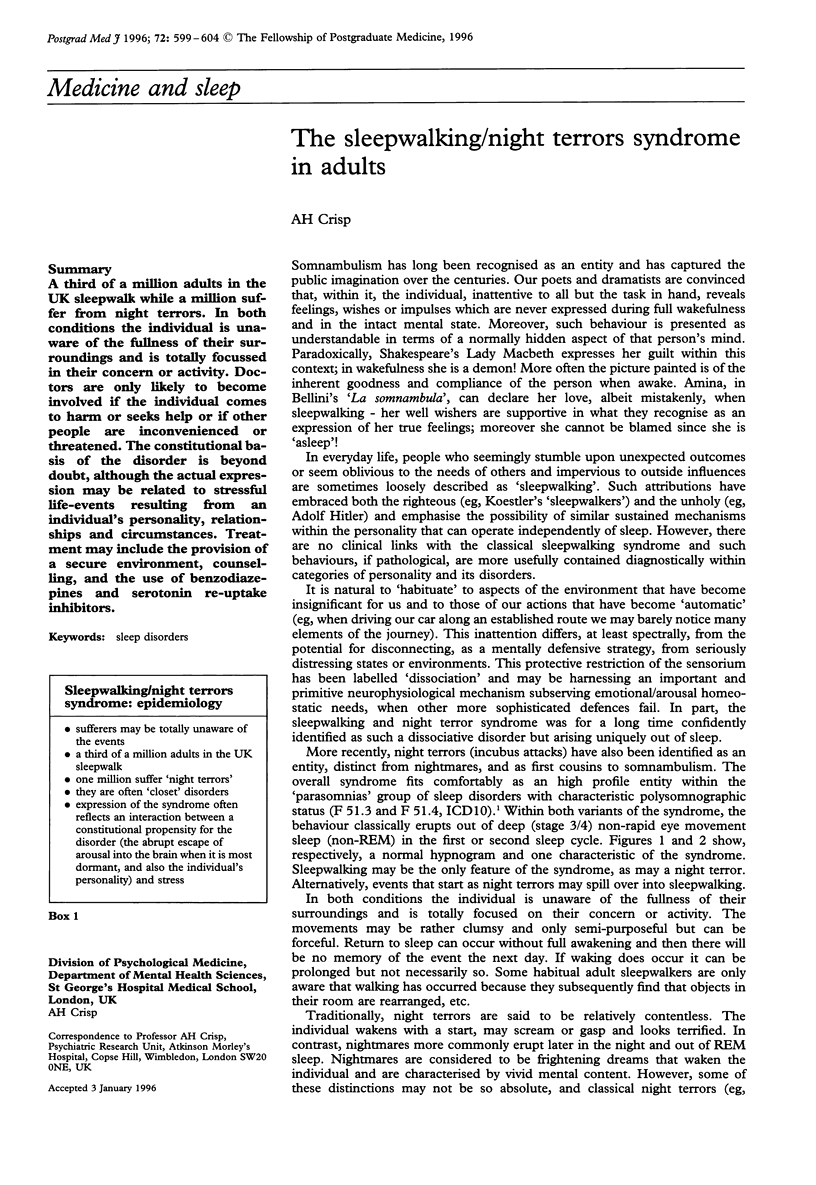
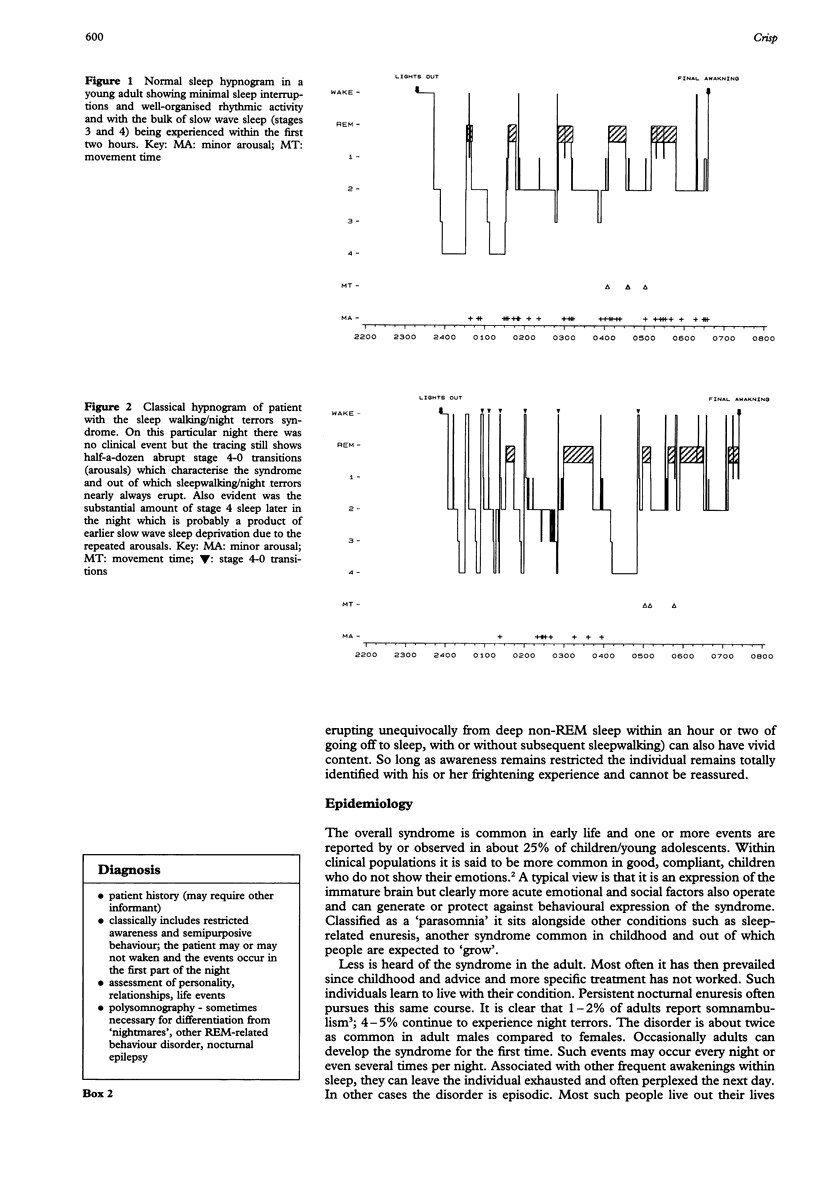
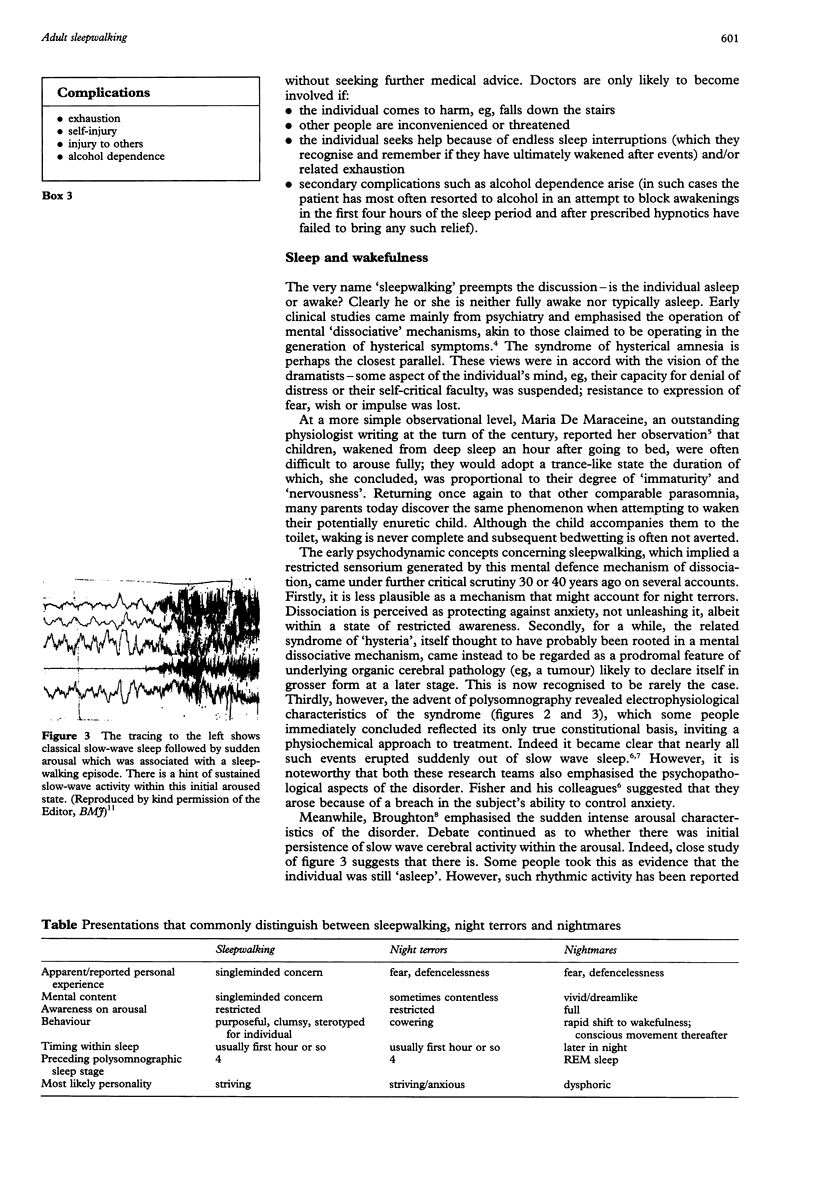
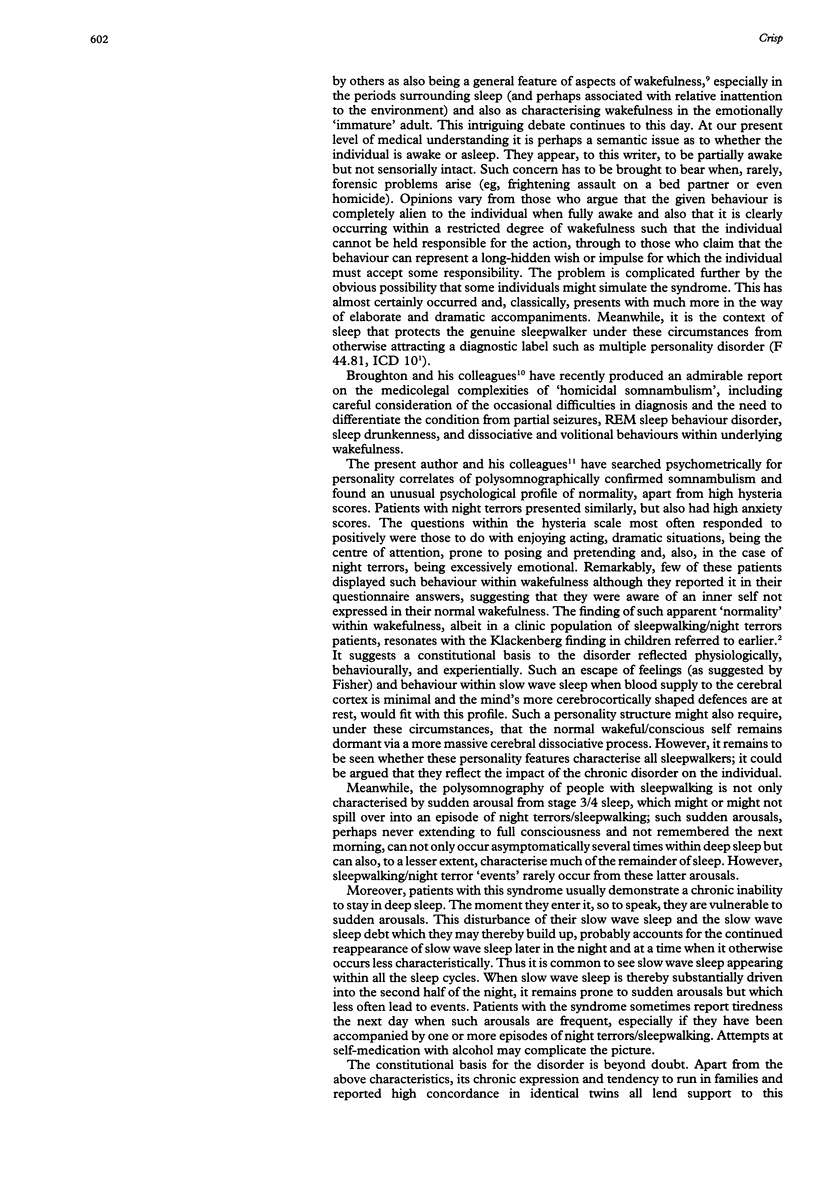
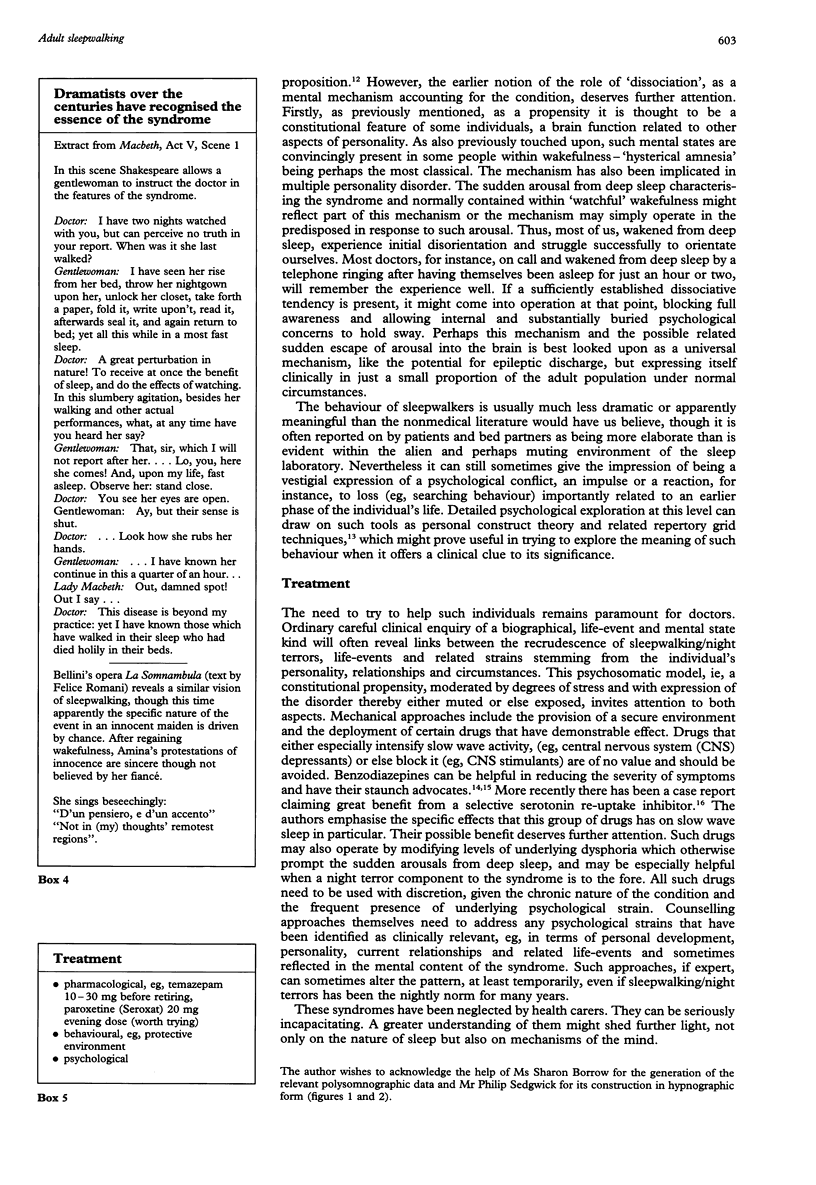
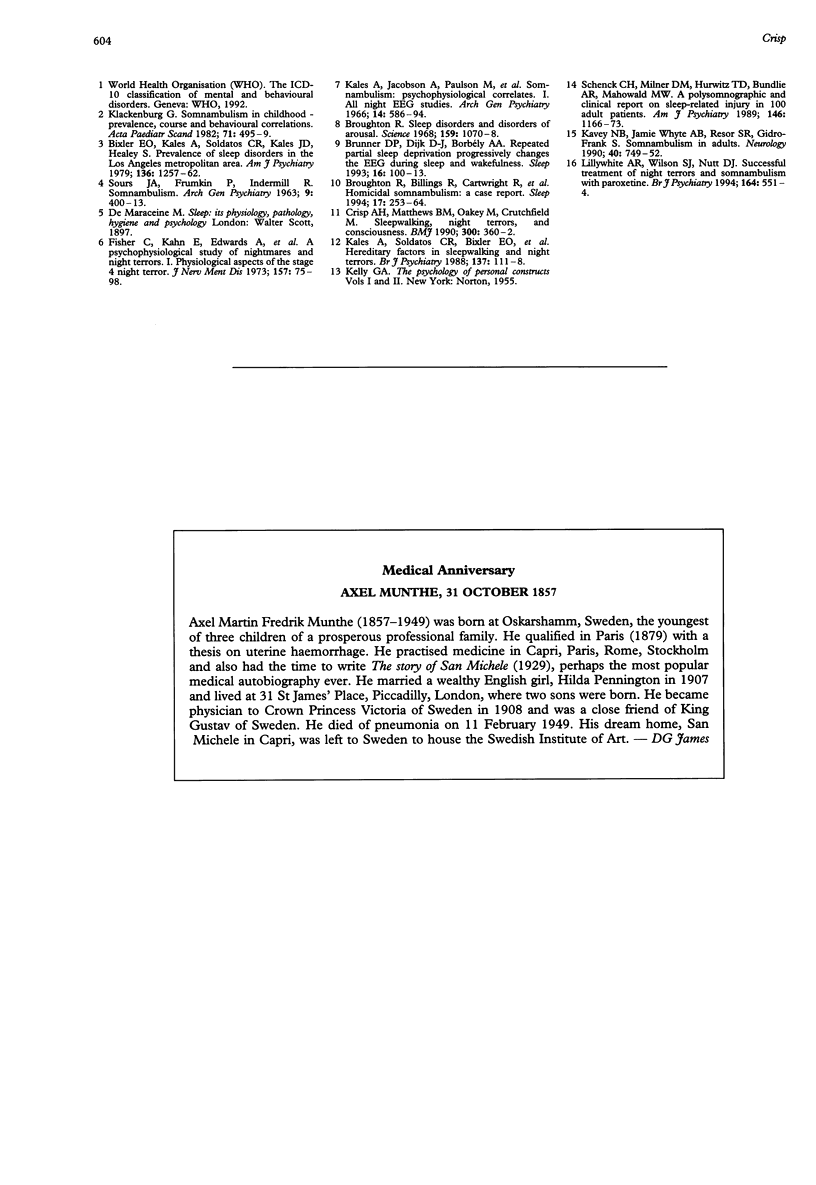
Selected References
These references are in PubMed. This may not be the complete list of references from this article.
- Bixler E. O., Kales A., Soldatos C. R., Kales J. D., Healey S. Prevalence of sleep disorders in the Los Angeles metropolitan area. Am J Psychiatry. 1979 Oct;136(10):1257–1262. doi: 10.1176/ajp.136.10.1257. [DOI] [PubMed] [Google Scholar]
- Broughton R. J. Sleep disorders: disorders of arousal? Enuresis, somnambulism, and nightmares occur in confusional states of arousal, not in "dreaming sleep". Science. 1968 Mar 8;159(3819):1070–1078. doi: 10.1126/science.159.3819.1070. [DOI] [PubMed] [Google Scholar]
- Broughton R., Billings R., Cartwright R., Doucette D., Edmeads J., Edwardh M., Ervin F., Orchard B., Hill R., Turrell G. Homicidal somnambulism: a case report. Sleep. 1994 Apr;17(3):253–264. [PubMed] [Google Scholar]
- Brunner D. P., Dijk D. J., Borbély A. A. Repeated partial sleep deprivation progressively changes in EEG during sleep and wakefulness. Sleep. 1993 Feb;16(2):100–113. doi: 10.1093/sleep/16.2.100. [DOI] [PubMed] [Google Scholar]
- Crisp A. H., Matthews B. M., Oakey M., Crutchfield M. Sleepwalking, night terrors, and consciousness. BMJ. 1990 Feb 10;300(6721):360–362. doi: 10.1136/bmj.300.6721.360. [DOI] [PMC free article] [PubMed] [Google Scholar]
- Fisher C., Kahn E., Edwards A., Davis D. M. A psychophysiological study of nightmares and night terrors. I. Physiological aspects of the stage 4 night terror. J Nerv Ment Dis. 1973 Aug;157(2):75–98. doi: 10.1097/00005053-197308000-00001. [DOI] [PubMed] [Google Scholar]
- Kales A., Jacobson A., Paulson M. J., Kales J. D., Walter R. D. Somnambulism: psychophysiological correlates. I. All-night EEG studies. Arch Gen Psychiatry. 1966 Jun;14(6):586–594. doi: 10.1001/archpsyc.1966.01730120026004. [DOI] [PubMed] [Google Scholar]
- Kales A., Soldatos C. R., Bixler E. O., Ladda R. L., Charney D. S., Weber G., Schweitzer P. K. Hereditary factors in sleepwalking and night terrors. Br J Psychiatry. 1980 Aug;137:111–118. doi: 10.1192/bjp.137.2.111. [DOI] [PubMed] [Google Scholar]
- Kavey N. B., Whyte J., Resor S. R., Jr, Gidro-Frank S. Somnambulism in adults. Neurology. 1990 May;40(5):749–752. doi: 10.1212/wnl.40.5.749. [DOI] [PubMed] [Google Scholar]
- Klackenberg G. Somnambulism in childhood--prevalence, course and behavioral correlations. A prospective longitudinal study (6-16 years). Acta Paediatr Scand. 1982 May;71(3):495–499. doi: 10.1111/j.1651-2227.1982.tb09458.x. [DOI] [PubMed] [Google Scholar]
- Lillywhite A. R., Wilson S. J., Nutt D. J. Successful treatment of night terrors and somnambulism with paroxetine. Br J Psychiatry. 1994 Apr;164(4):551–554. doi: 10.1192/bjp.164.4.551. [DOI] [PubMed] [Google Scholar]
- SOURS J. A., FRUMKIN P., INDERMILL R. R. SOMNAMBULISM: ITS CLINICAL SIGNIFICANCE AND DYNAMIC MEANING IN LATE ADOLESCENCE AND ADULTHOOD. Arch Gen Psychiatry. 1963 Oct;9:400–413. doi: 10.1001/archpsyc.1963.01720160090012. [DOI] [PubMed] [Google Scholar]
- Schenck C. H., Milner D. M., Hurwitz T. D., Bundlie S. R., Mahowald M. W. A polysomnographic and clinical report on sleep-related injury in 100 adult patients. Am J Psychiatry. 1989 Sep;146(9):1166–1173. doi: 10.1176/ajp.146.9.1166. [DOI] [PubMed] [Google Scholar]


